Muslim Sites in Israel
Thanks to the recent Abraham Accords, and warm relations with several Arab nations, Israel is rapidly becoming a hot vacation spot, and pilgrimage destination for Muslim tourists. Visitors from Arab nations like Morocco, Bahrain, and the Emirates can now take Israel Muslim tours. Jerusalem is the third most sacred Islamic site in the world (after Mecca, and Medina in Saudi Arabia). But there is much more for Muslim tourists to see in Israel besides Al-Aqsa Mosque and Temple Mount. Israel has a plethora of Islamic heritage sites, as well as secular attractions that all tourists want to see. Here is a sample of the top Israel Muslim sites.
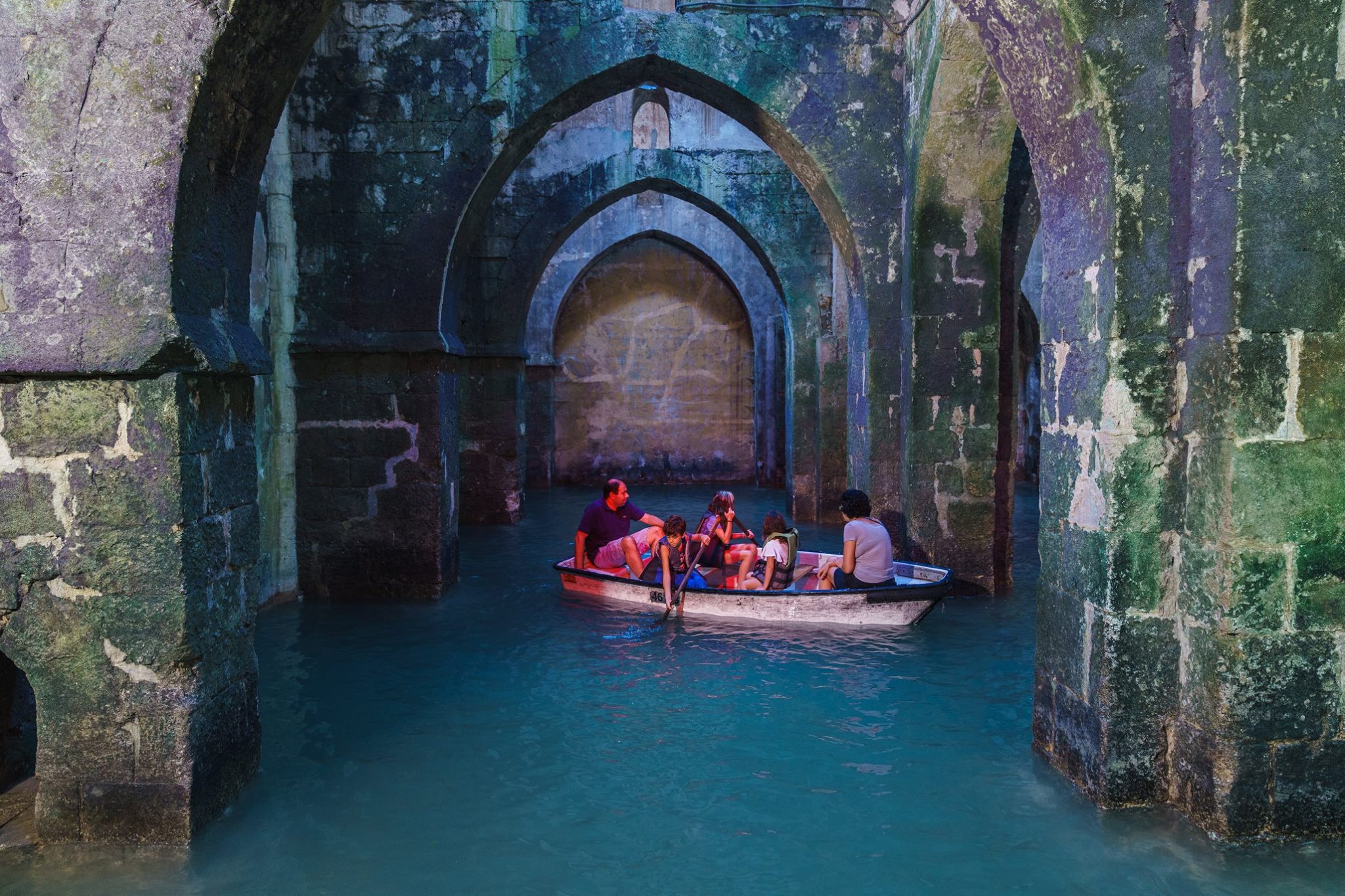
The Arches Pool, Ramle. Israel. Photo credit: © Dmitry Mishin
Islamic Sites in Jerusalem
Jerusalem has iconic mosques, and landmarks built by historic Muslim leaders. The most important Muslim sites in Jerusalem are concentrated on Temple Mount. On a Temple Mount and Dome of the Rock Tour, you can explore this sacred corner of the Old City. Or take a Private Tour of Jerusalem where you can pick and choose which sites to visit.
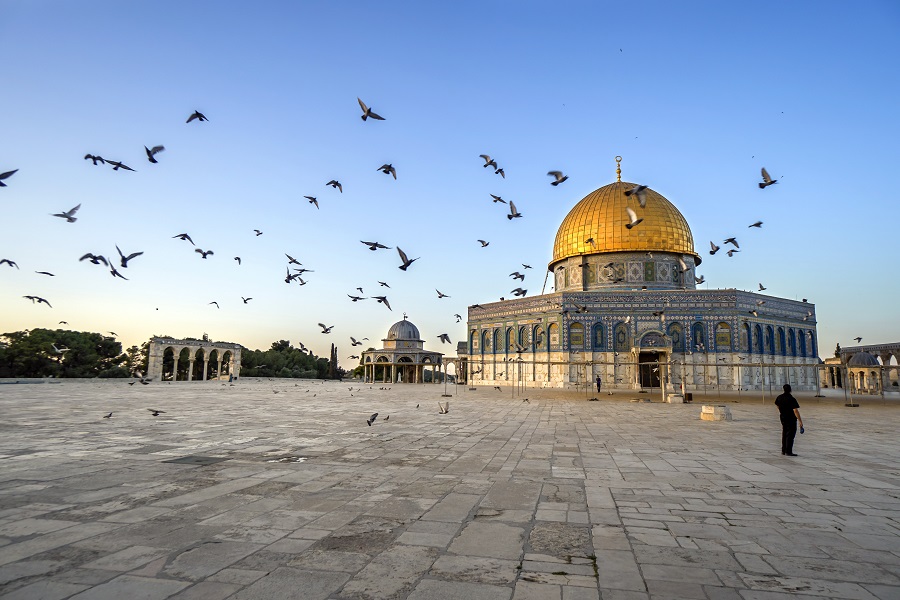
Temple Mount with Dome of the Rock. Photo credit: © Shutterstock
- Temple Mount (Al Haram ash-Sharif) - For centuries Haram ash-Sharif (The Noble Sanctuary) has been sacred to Jews, Muslims, and Christians. Covering the mount is a raised plaza surrounded by retaining walls (including the Western Wall). The Jewish Holy Temple stood on Temple Mount until its destruction in 70AD, but today iconic Islamic landmarks dominate Temple Mount. Visiting hours for Temple Mount are Monday to Thursday, but the site can be closed without notice for security reasons. Temple Mount is closed to visitors on Friday and Saturday.
- Al-Aqsa Mosque - The third most sacred mosque in Islam stands on Temple Mount. It was built during the Umayyad period (705AD) and is associated with Muhammad’s Night Journey to the “Furthest Mosque”, as told in the Quran. The rectangular mosque covers 14.4 hectares (36 acres) and can hold up to 5,000 worshipers.
- Dome of the Rock - This magnificent structure is a symbol of Jerusalem. It was completed in 692AD and rebuilt in 1022AD. It is one of the oldest Islamic structures in existence. Beneath the dome is an octagonal-shaped structure covered with stunning mosaics. The structure holds the Foundation Stone which is sacred to all the Abrahamic religions. It is also where Muhammad ascended to heaven
. - Solomon’s Stables (Marwani Mosque) - At the bottom of the stairs leading to Al-Aqsa is an underground vaulted space featuring twelve rows of pillars and arches. This is thought to be the legendary stables of King Solomon.
- Dome of the Chain (Qubbat as-Salsalah) - This ten-sided structure was built in the 7th century and stands alongside the Dome of the Rock. In Islamic tradition, this is where the Last Judgement will take place at the “end of days.”
- Scale Arches (Qanatir) - Spanning the steps leading to the Dome of the Rock are a series of arched columns built during the Mamluk period and known as the Scales of Judgement. Legend has it that scales will be hung here on the Day of Judgement to measure the weight of souls.
- Dome of the Ascension (Zawiya of Rabi’a al-Adawiyya) - Built on the Mount of Olives, this mosque shares the site with a Christian Chapel of Ascension marking where Christ ascended to heaven. A burial crypt next to the chapel may have belonged to an 8th-century righteous Muslim woman, Rabi’a al-Adawiyya.
- Mosque of Omar - Alongside the courtyard of the Church of the Holy Sepulcher is a mosque built to mark where Caliph Omar (579-644) prayed rather than entering the Christian church. The mosque has a distinctive 15-meter-high minaret.
- Al-Khanqah al-Salahiyya Mosque - On the northern flank of the Church of the Holy Sepulcher is a mosque built in 1418, with a minaret mirroring that of the Mosque of Omar on the other side of the church.
- Al-Yaqubi Mosque - In 1187 the Crusader Church of St. James, at Jaffa Gate, was converted into a mosque by Saladin. The small house of worship is named after Sheikh Yaqoub al-Ajami and features a beautiful enamel name plaque.
- Muslim Quarter - This area of the Old City is rich with Islamic heritage sites and packed with mosques from every period of history. Wander the fascinating lanes of the bazaar and pick up some authentic souvenirs.
- Walls of the Old City - The thick stone walls surrounding the 1km² Old City were built in 1535, under Ottoman Sultan Suleiman I. You can walk along the ramparts of this 2.5meter (8.2ft) thick wall.
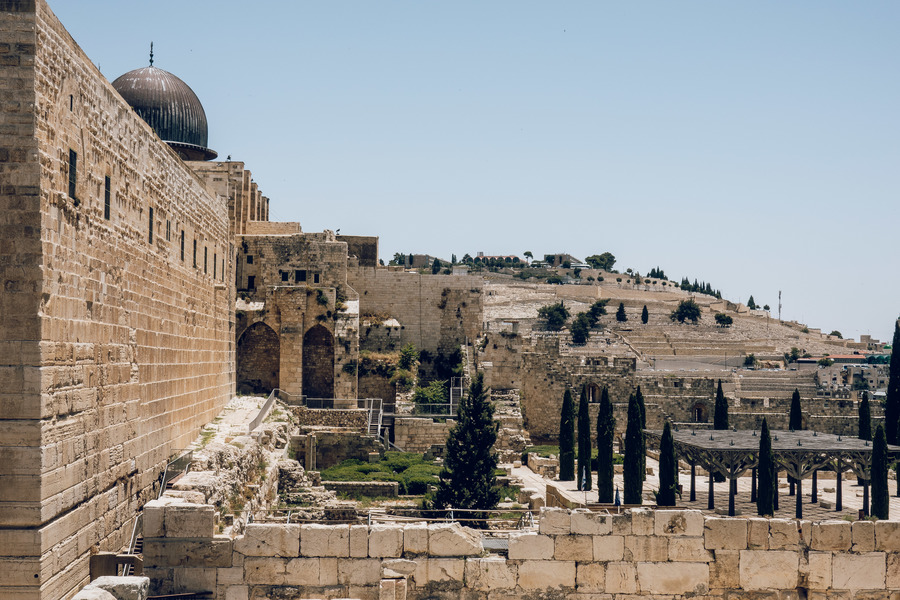
The roof of Al Aqsa Mosque, Temple Mount, Jerusalem. Photo credit: © Dmitry Mishin
Muslim Sites in Acre Old City
Acre’s Old City is a UNESCO World Heritage Site that has seen Romans, Ottomans, Crusaders, Mamluks, and British come and go. The city is surrounded by thick Ottoman-era walls, and there are Crusader structures above ground and below. Within the ancient walls are historic sites built by iconic Muslim leaders. One of the best-known Muslim rulers of Acre was Jazzar Pasha (the butcher) who undertook ambitious architectural projects. To fully appreciate all that the city has to offer, join an Acre and Caesarea Tour.
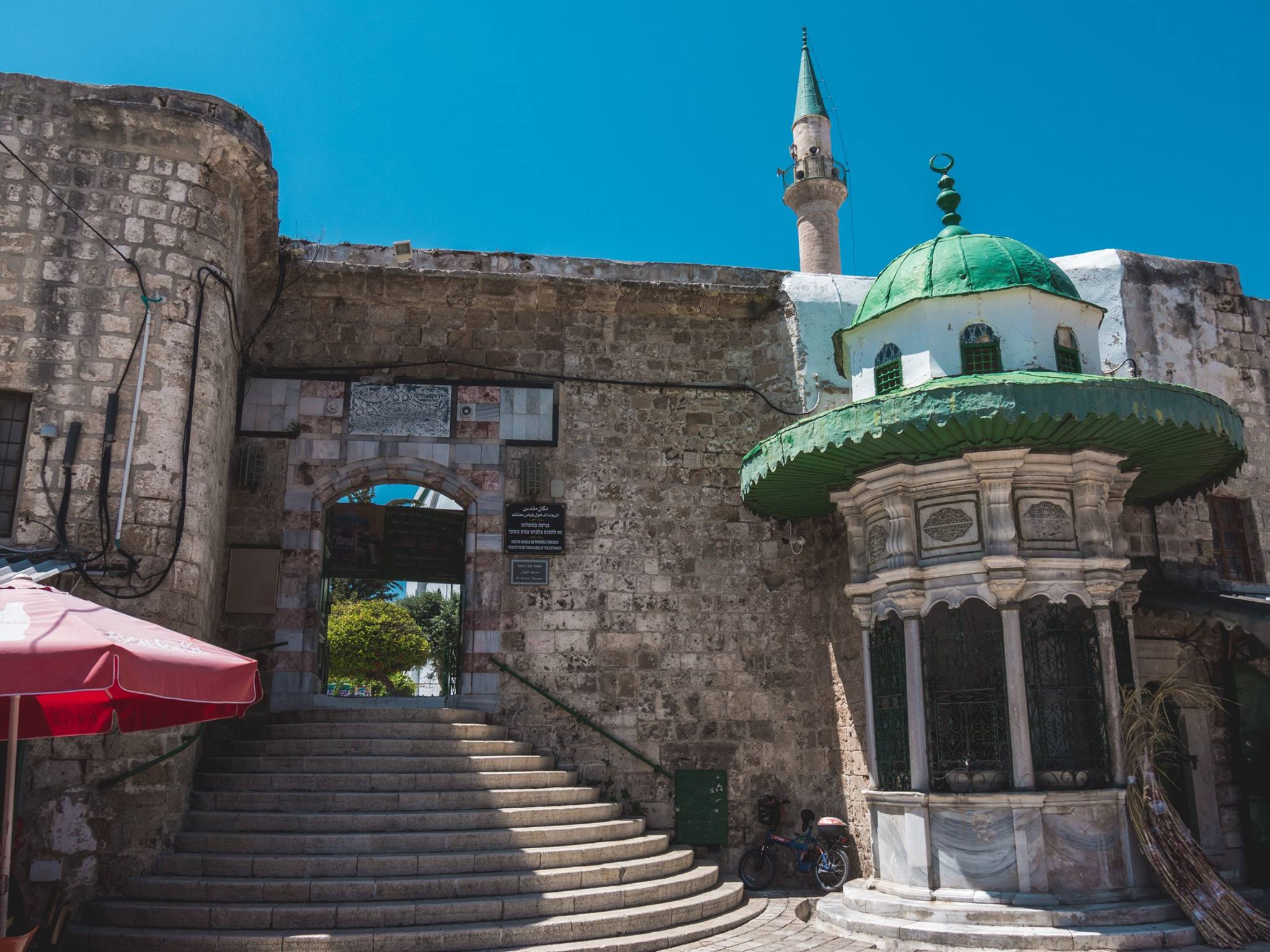
Entrance to Al-Jazzar Mosque, Acre. Photo credit: © Dmitry Mishin
- Al-Jazzar Mosque (White Mosque)-At the entrance to the Old City stands one of Israel’s most beautiful mosques and the country’s largest mosque, outside of Jerusalem. Al-Jazzar Mosque houses Sha’r an-Nabi, a lock of hair from the beard of the Prophet Muhammad.
- Khan al-Umdan (Caravanserai of the Pillars)-The Inn of the Columns (Khan I Avamid) is the country’s largest and best-preserved example of an Ottoman-era roadside inn or caravanserai. It was constructed by Jazzar Pasha in 1784.
- Zawayat El-Shadlia - Sheikh Ali Nur el-Din el-Yisroti (el-Magrabi) founded the Order of Acre Dervishes in the 18th century. He had this zawayat built south of the fortress as a place for retreat and communion for the Dervishes and Sheikhs.
- Museum of Hamam al-Basha - The reconstructed Ottoman Turkish bathhouse is brought to life by the story of the last bath attendant. Statue figures “act out” scenes from the 19th-century bathhouse.
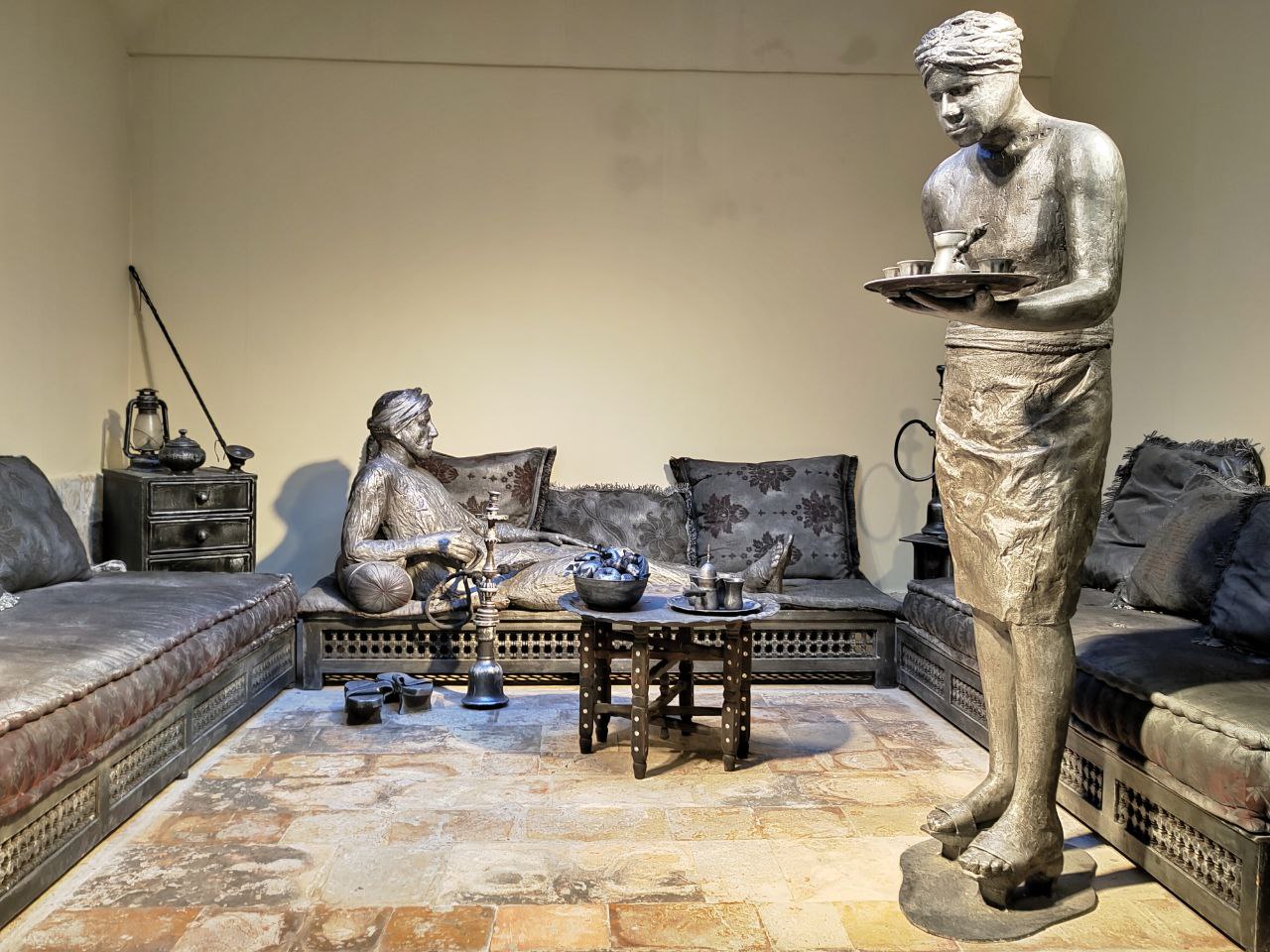
- Turkish bathhouse, Acre. Photo credit: © Dmitry Mishin
Tel Aviv-Jaffa Muslim Sites and Attractions
Muslim visitors will want to combine Israel Muslim sites with a stop in the throbbing metropolis of Tel Aviv. This liberal, forward-thinking city holds a few hidden gems for Muslim tourists. Tel Aviv is a joint municipality with neighboring Jaffa, one of Israel’s multi-cultural cities, where residents of all faiths co-exist.
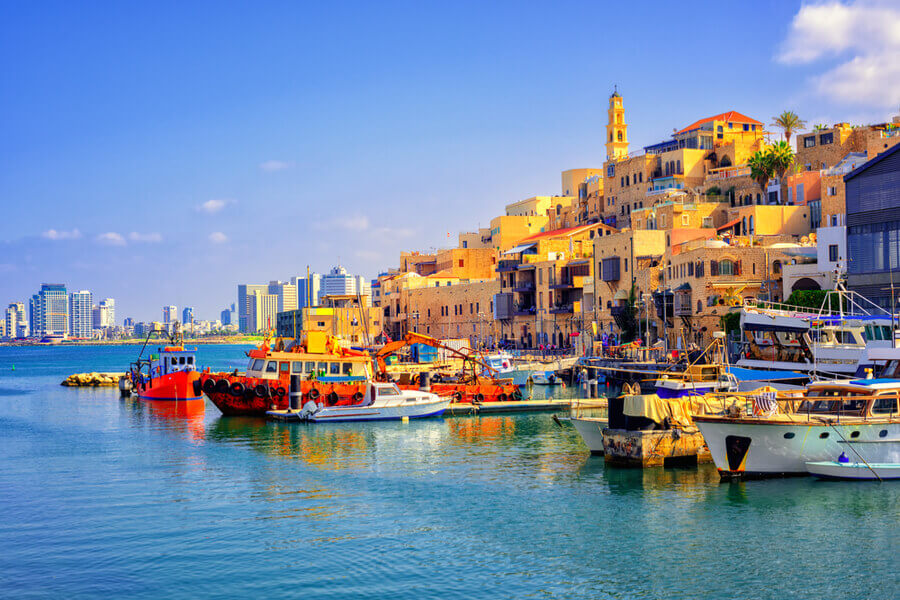
Old Jaffa Port. Photo credit: © Shutterstock
- Jaffa Flea Market - Enjoy the hustle and bustle of this unique market, with its eclectic junk stores, antique dealers, and eateries selling mouthwatering delicacies. Take a Jaffa Flea Market Tour to get to know the area.
- Jaffa Clock Tower - The most distinctive landmark in Jaffa is the clock tower built in 1906 in honor of Sultan Abdul Hamid II.
- Jaffa Museum of Antiquities -The museum is housed in an 18th-century building, once used as the headquarters for Ottoman leader, Abu Nabout (or Nabbut).
- Great Mahmoudiya Mosque - Ottoman governor Abu Nabbut had this mosque built in Jaffa in 1812. A historic water fountain (Sabil Abu Nabbut) stands at the mosque entrance.
- Al-Bahr Mosque (Jami al-Bahr or Sea Mosque) - At the highest point in Jaffa stands the Sea Mosque that looks out across the water towards Tel Aviv. Its minaret has been a symbol of the city, since its construction in 1675.
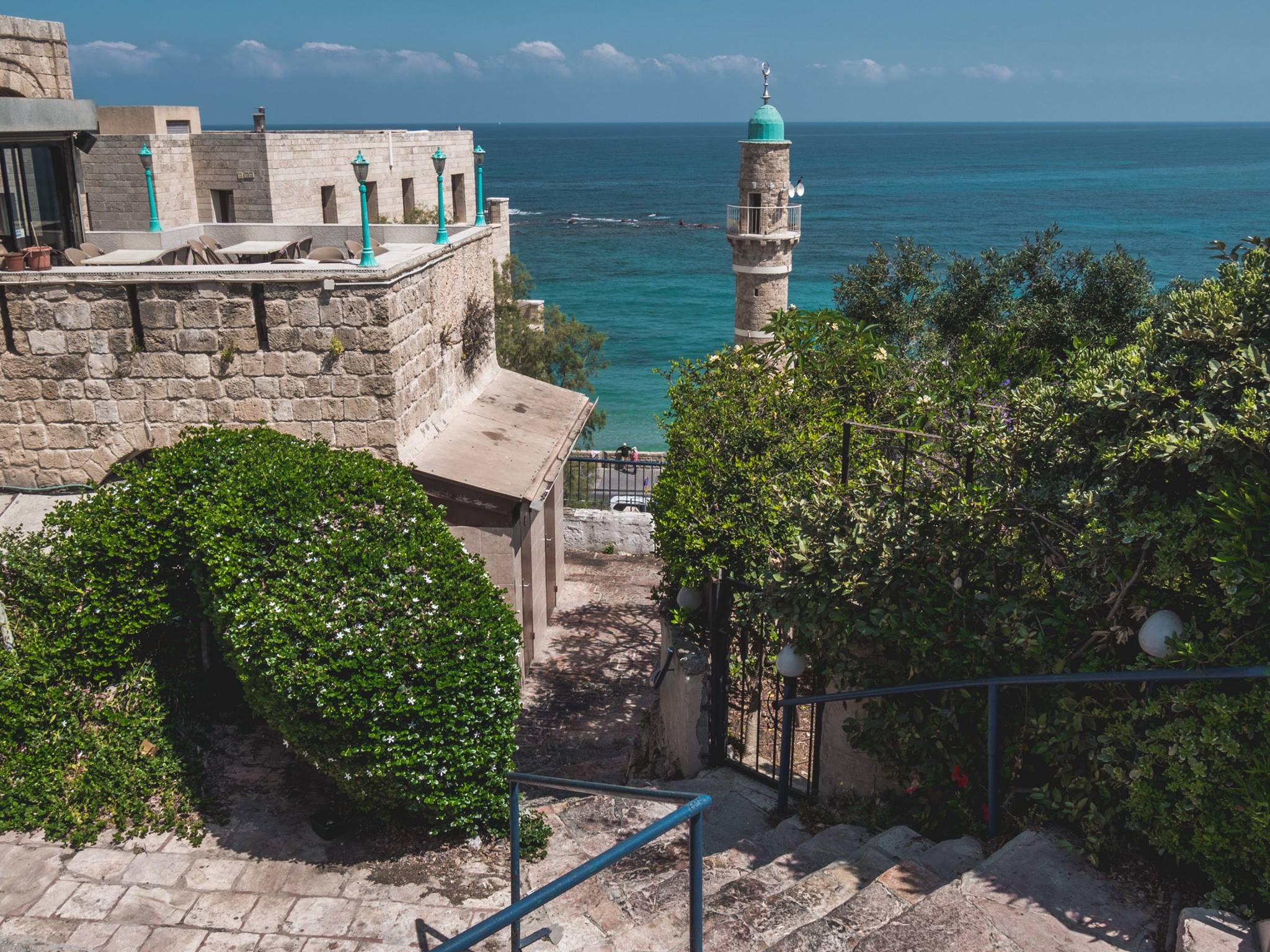
Minaret of Jami al-Bahr Mosque, Jaffa. Photo credit: © Dmitry Mishin
Haifa and the Carmel Muslim Sites
Haifa is a multi-cultural city that has been called a “model of co-existence.” Neighborhoods like Wadi Nisnas are known for their mixed Jewish and Muslim communities. It is the capital of the north, and a thriving city built on the slopes of Mount Carmel (Jabal el-Carmil), and along the shore of Haifa’s spectacular natural bay.
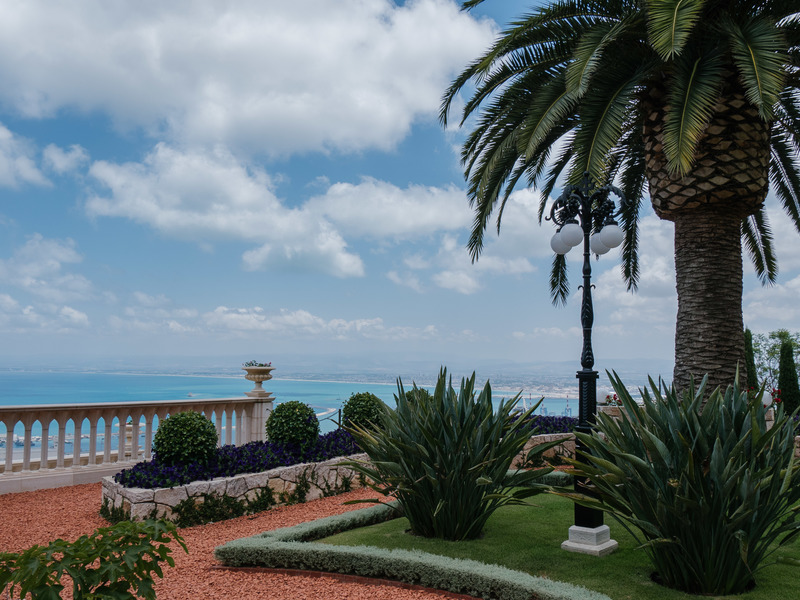
Haifa bay view from Bahai Gardens. Photo credit: © Dmitry Mishin
- Al-Jarina Mosque - Israel Muslim tours stop at Haifa’s most famous mosque. The 18th century Al-Jarina Mosque has a distinctive minaret that resembles a European clock tower.
- Istiqlal Mosque - This is Haifa’s largest mosque, built in 1926. It stands at the entrance to the city’s lively flea market.
- Bahai Gardens - Not a Muslim site but a gem not to be missed - the Bahai Gardens were created around the Shrine of the Bab, and cascade down the slope of Mt. Carmel to downtown Haifa, and the historic German Colony. The gardens are a UNESCO site recognized for their outstanding beauty.
- Cave of Elijah - On a Private Tour of Haifa and the Carmel you can opt to visit the cave inhabited by the Prophet Elijah. The cave is a sacred site for Christians, Jews and Muslims.
- Daliat-el-Carmel Druze Village - A short excursion into the Carmel Mountains, and you will reach this enchanting Druze village. Learn about the unique Druze culture and visit the Druze Heritage Center.
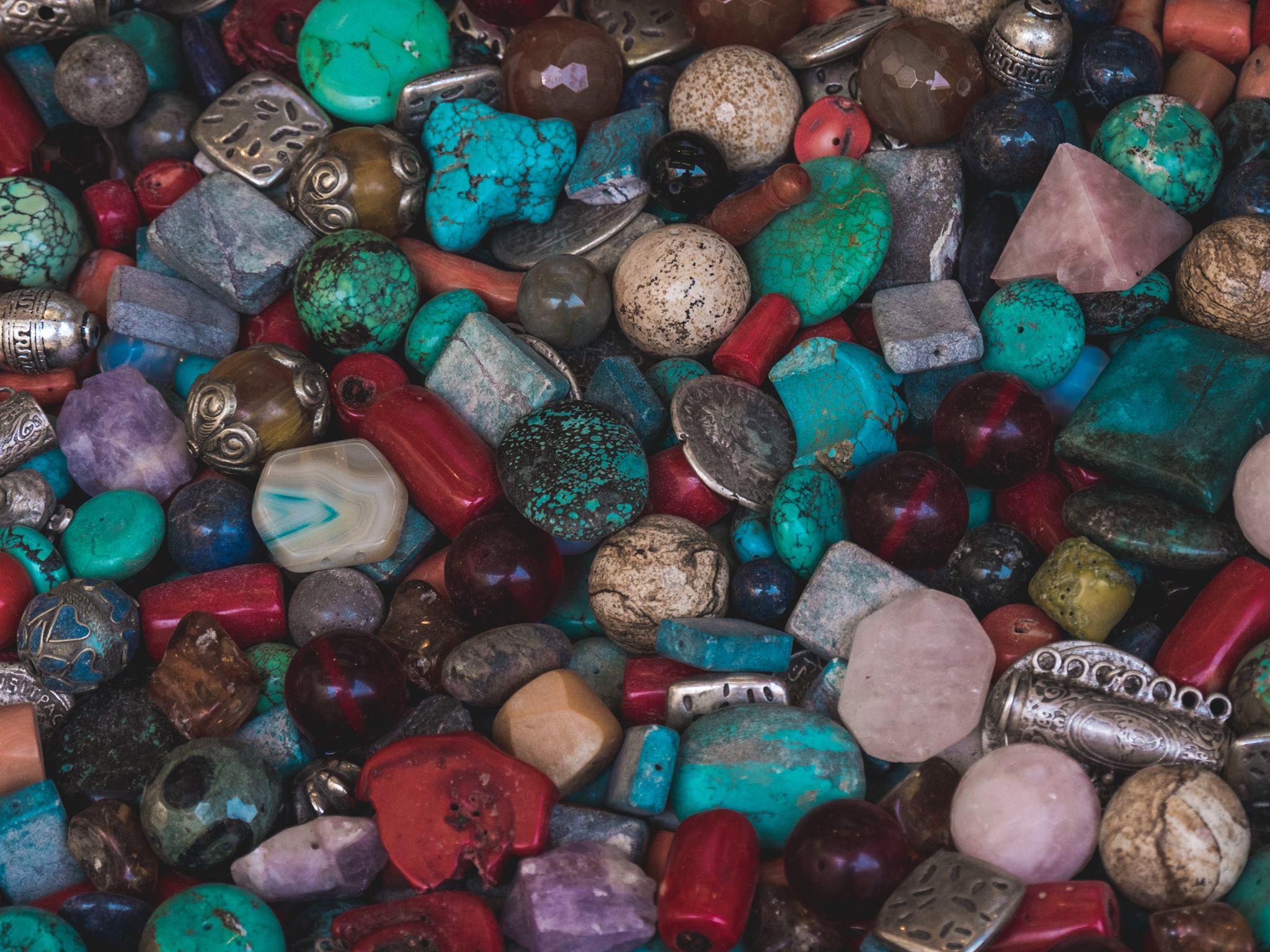
Haifa flea market. Photo credit: © Dmitry Mishin
Muslim Sites in the Galilee and Sea of Galilee
The Galilee in northern Israel is arguably the most beautiful part of the country. Its streams, waterfalls, woodlands, vineyards, and farmlands make it an idyllic setting. Nature lovers can enjoy hike trails and in winter you can ski on Mount Hermon. On a Private Nazareth and Sea of Galilee Tour you can include stops at several significant Muslim landmarks in the region.
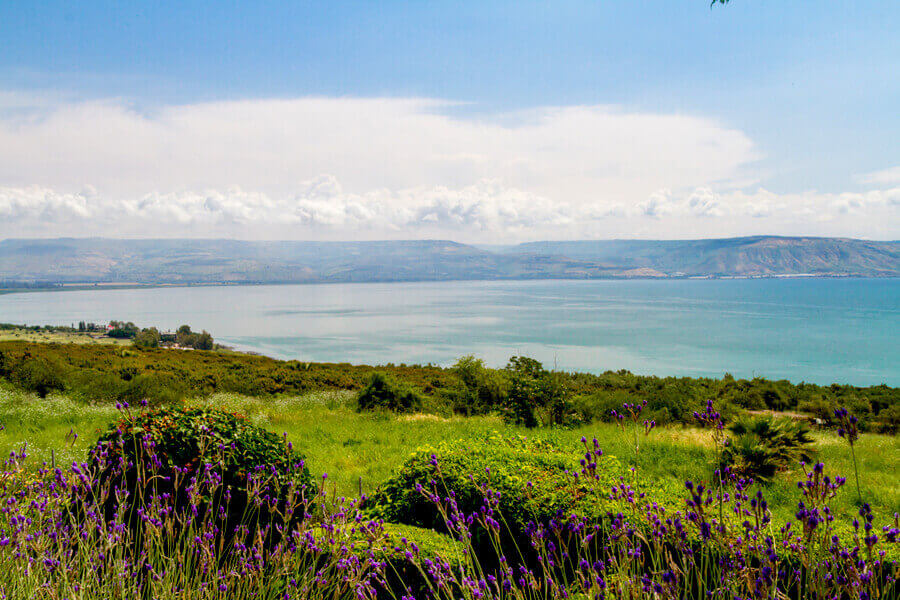
Sea of Galilee. Photo credit: © Shutterstock
- Nazareth - Israel’s largest Arab (Christian and Muslim) population lives in Nazareth. Visit the Mosque Quarter in Nazareth’s Old Market and see the splendid White Mosque which was completed in 1808.
- Ela-Nabi Sa’in Mosque - On the outskirts of Nazareth is this magnificent mosque built on a high ridge offering panoramic views across the Upper Galilee.
- Tomb of Nabi Shuaib - The tomb of Druze Prophet Shu’ayb (traditionally identified with the biblical Prophet Jethro), is located near Kfar Zeitim, close to Tiberias.
- Tiberias - The largest and most important city on the shores of the Sea of Galilee, Tiberias is a popular vacation spot with excellent fish restaurants and attractions on the waterfront. Recently, archaeologists uncovered a mosque dating back to 670AD located just south of Tiberias.
- Karnei Hattin (Horns of Hattin) - This is one of the most important Israel Muslim sites. See where the mighty Muslim warrior Saladin defeated Christian Crusaders at the Battle of Hattin in 1187. From Karnei Hattin there are spectacular views across Galilee.
- Nimrod Fortress National Park - the medieval Ayyubid castle graces the slopes of Israel’s highest mountain, Mount Hermon, above the Banias spring. Overlooking the forested dales and the magnificent Golan Heights, the castle was built with the purpose of guarding a major access route to Damascus against Crusaders.
There are many more Islamic sites in Israel, as well as secular attractions that interest all visitors. When you book Israel Muslim tours be sure to include some of these top Islamic landmarks.
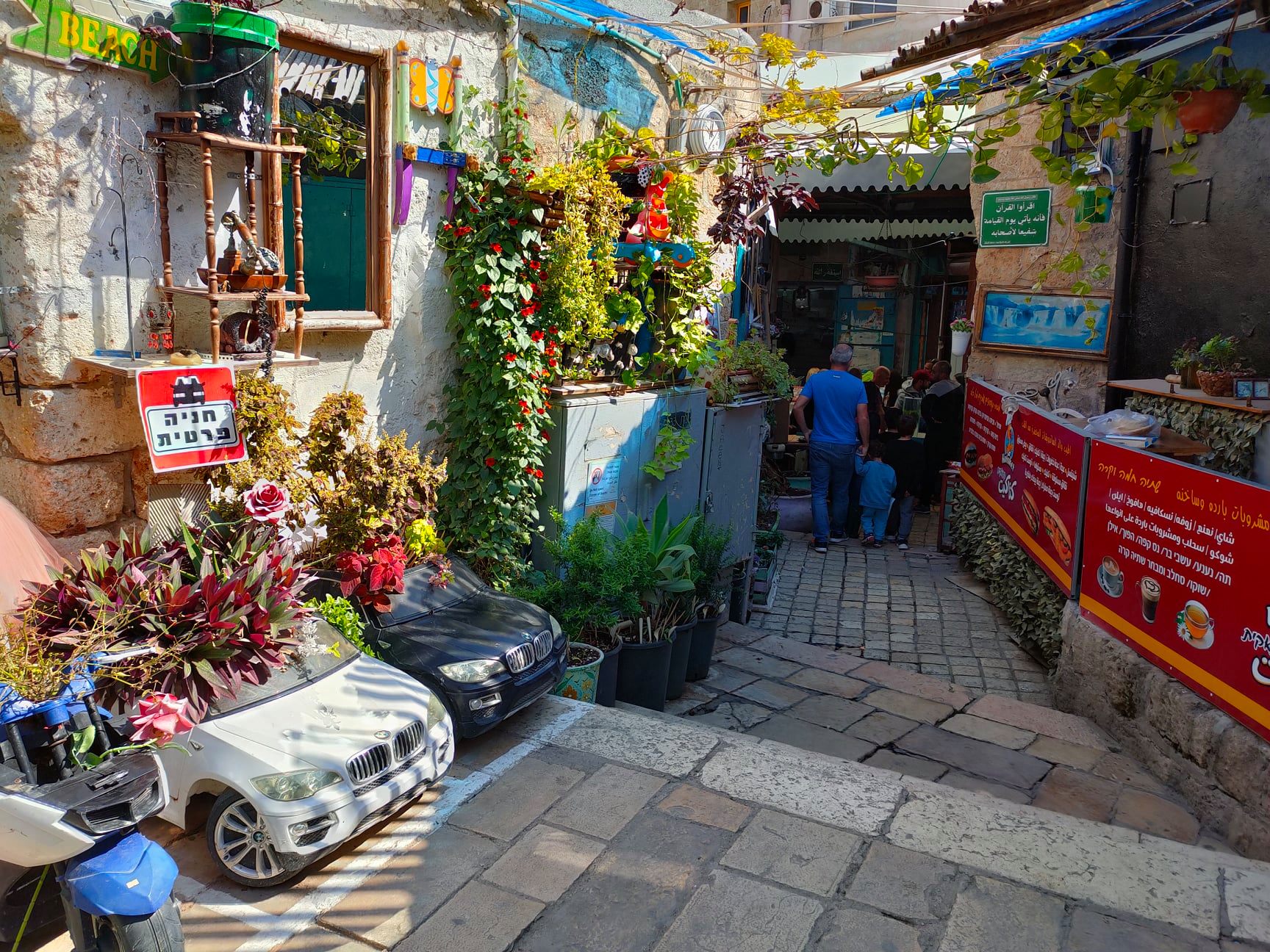
Old City street, Acre. Photo credit: © Dmitry Mishin
 Login / Register
Login / Register
 Contact Us
Contact Us
 Certificate of Excellence
Certificate of Excellence Guaranteed Departure
Guaranteed Departure Low Prices Guaranteed
Low Prices Guaranteed 24/7 Support
24/7 Support




